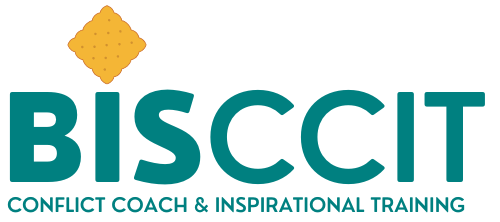I am sure you have experienced that surprised feeling when a close friend, partner or family member suddenly says or does something completely unexpected, that hurts you deeply. With a stranger you might assume that it was just a thoughtless comment or an unfortunate action, but with a loved or respected person that seems impossible. Surely they should know you better. So it MUST be their intention to hurt you, you are certain… Enormous anger and sadness wells up inside you, and you immediately lash back or you retreat into yourself, that depends on your character. Your over-emotional reaction causes a similar reaction in the other person (who honestly does not understand where your anger or sadness comes from) and before you know it you are locked in the vicious conflict cycle together. Can you break that vicious cycle, without it immediately leading to a break in a valuable friendship or collaborative relationship?
Of course you can! But you have to be open to the fact that people are not the same. An introvert and an extravert will react differently to the same situation. Even worse: The same person can show different sides of his character depending on the situation. Your friend Pete may be a calm person, but if someone talks jokingly about the advantages of being childless, his reaction may be unusually strong if he can’t have kids. Our reaction to a situation is always colored by the “glasses” we wear, which reflect what we have experienced. If you get six people to describe the same car accident, you will hear six stories. All are true, and all are completely different. The police officer will pay particular attention to the traffic errors that have been made and the doctor to the injuries that have been sustained. The person driving on the other side of the road has not been able to see what happened behind the accident and the passenger in the back seat has information that the outsiders do not know about. The bystander who has lost a loved one in a previous car accident reacts with stronger emotions than the journalist who tries to describe the accident objectively. All of us only see subjective parts of the truth, and yet we think our version of the story is the only correct version and our response is the only appropriate one. And we will fight anyone who tells us otherwise.
A couple of examples from every day practice:
Dennis and Tom have bought a dog together. Neither has experience with dogs. The training is not going well. Dennis, who is usually a kind and quiet man, shouts louder commands at the dog every day. Tom comforts the dog with cookies as soon as Dennis turns his back. The dog gets completely confused by all the mixed messages and starts to wreck the house. Tom and Dennis each think the other is at fault. Where at first there was harmony between them, this new situation shows them a totally different side of their partner and they don’t like it one bit. When they approach the Conflict Coach, they are on the brink of getting rid of the dog or maybe even each other. The Conflict Coach first determines that they have several common interests. They want the love and understanding back they once had, and they want a well-trained dog. Next they look at the different glasses they wear in this situation. It becomes clear that Dennis was praised by his parents if he pushed hard to reach a goal. Tom however was bullied in school and hates pushy people. While Dennis sees his perseverance in training the dog through the pink “praise-glasses” of his parents, Tom sees the same actions through the dark “bully-glasses” of his youth. Once they recognize that their goals are the same and their intentions are good, it becomes easier to work out a solution for the training that they both (and the dog!) feel more comfortable with.
Marfa and Jess have been best friends ever since they were small kids. They have grown apart a little since they both went to different schools to study, but they are still good friends. Jess is getting married. She talks frequently to Marfa about the bridal shower she is going to have, when and where it will be, what Marfa thinks would be a nice theme, who is coming. Marfa does not receive a formal invitation, so she does not attend. She is very sad Jess does not want her there. Jess is very sad that her best friend does not show up. They both think this is probably the end of their lifelong friendship. Fortunately one of their friends puts them in touch with the Conflict Coach who helps them out. They are reminded that Jess comes from a warm family where Marfa was always welcome. Marfa’s mother however, often warned her she might one day overstay her welcome and be seen as a nuisance. Jess sees not sending a formal invitation through the pink glasses of “you are family, of course you should come” whereas Marfa sees it through the dark glasses of her mother’s warning. Once they realize this, the chill is out of the air.
The Key Take Away: Don’t interpret someone’s (re)action as hurtful because it is different to your own. Try and figure out – if need be with a Conflict Coach – which glasses they wear, and try to see their point of view.






